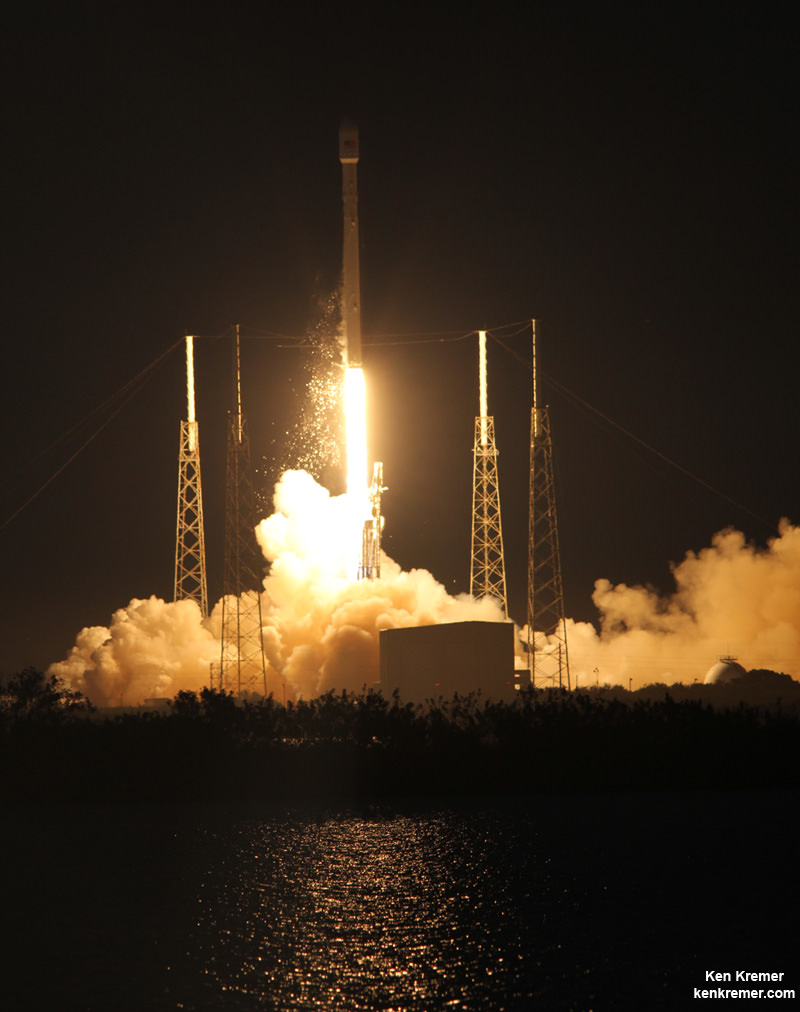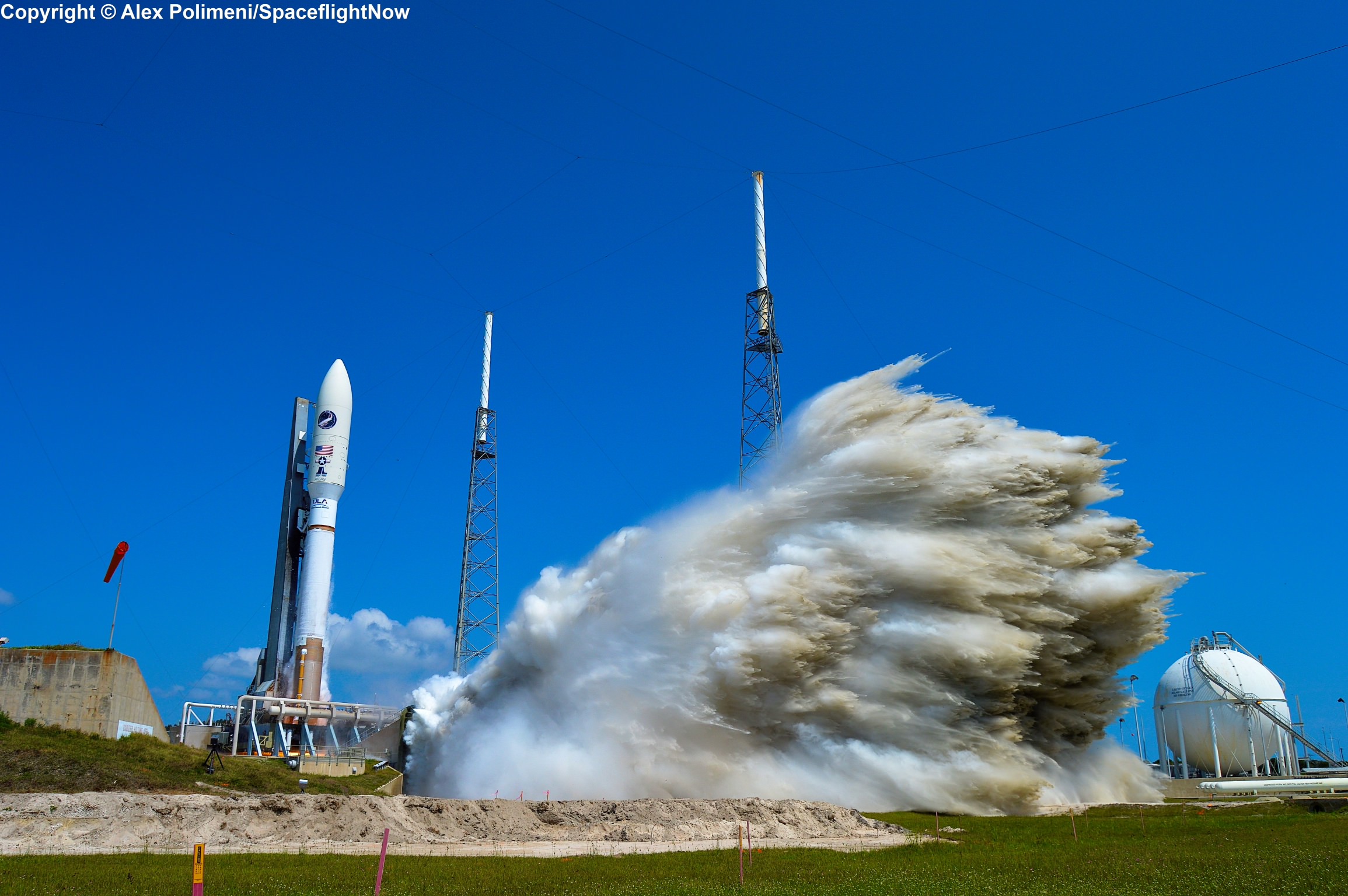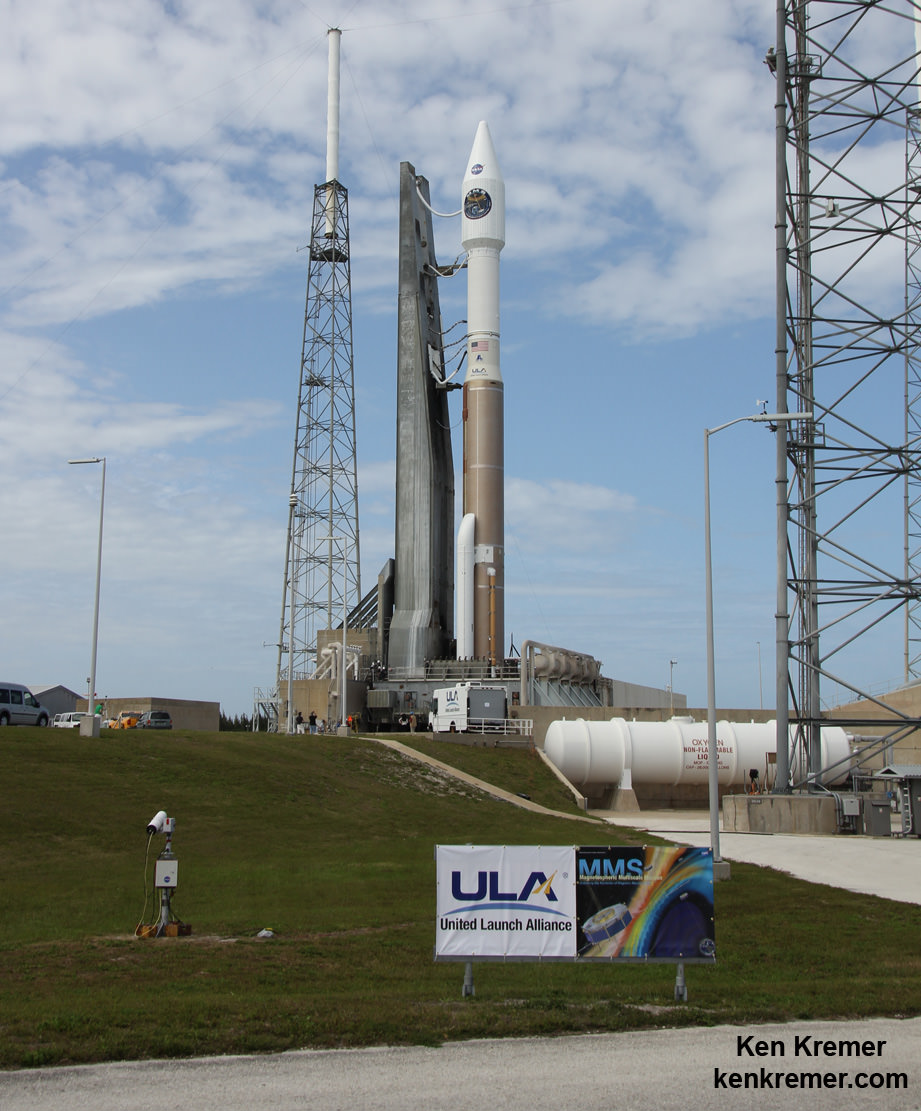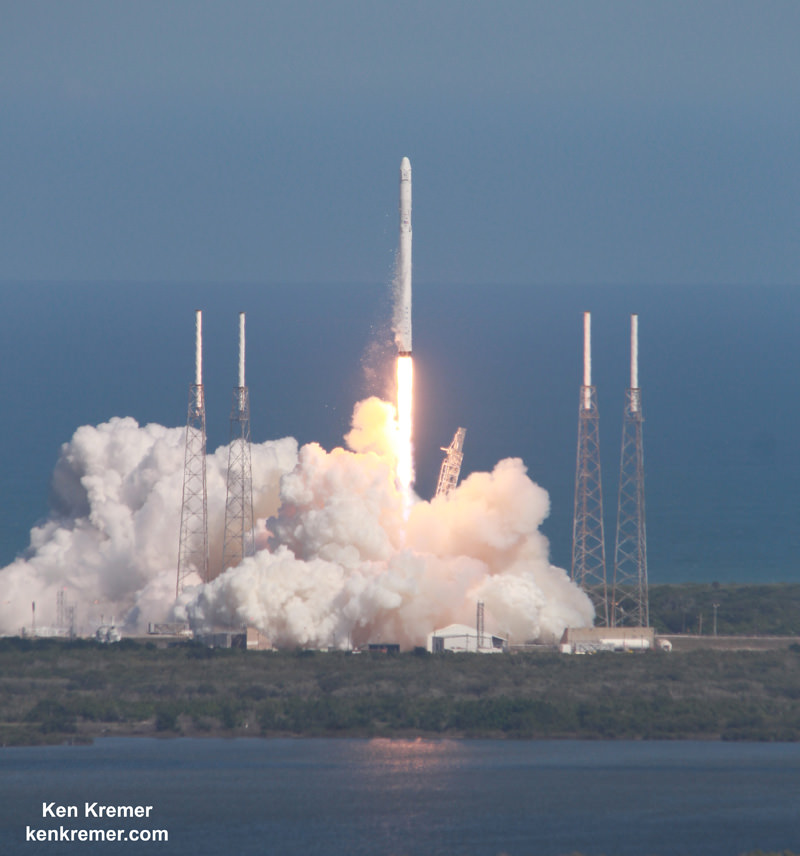SpaceX Falcon 9 is now certified for USAF launches. SpaceX Falcon 9 and Dragon blastoff from Space Launch Complex 40 at Cape Canaveral Air Force Station in Florida on April 14, 2015 at 4:10 p.m. EDT on the CRS-6 mission to the International Space Station. Credit: Ken Kremer/kenkremer.com
Story updated[/caption]
The U.S. Air Force announced Tuesday that they have certified SpaceX to launch the nations critical and highly valuable national security satellites on the firms Falcon 9 rocket, thereby breaking the decade old launch monopoly held by launch competitor United Launch Alliance (ULA). ULA is a joint venture owned by aerospace giants Boeing and Lockheed Martin.
The Air Force’s goal in approving the SpaceX Falcon 9 booster is aimed at drastically cutting the high cost of access to space by introducing competition in the awarding of military mission launch contacts. The prior contract involved a sole source $11 Billion “block buy” bid for 36 rocket cores from ULA in December 2013 which was legally challenged by SpaceX in April 2014, but eventually settled by SpaceX in an agreement with the USAF earlier this year.
Lieutenant General Samuel Greaves, Commander of the Air Force Space and Missile Systems Center (SMC), announced the long awaited decision on Tuesday, May 26.
The certification milestone came after a grueling two year review process in which the Air Force invested more than $60 million and 150 people to thoroughly review all aspects of the Falcon 9 booster. The review was based on three successful flights by the Falcon 9 v1.1 which first launched in late 2013.
The purpose of certification is to assure that qualified launch providers could meet the challenge of safely, securely and reliably lofting expensive U.S. national security military missions to space and into their intended orbits with full mission capability that are critical for maintaining national defense.
“The SpaceX and SMC teams have worked hard to achieve certification,” said Greaves, Commander of the Air Force Space and Missile Systems Center (SMC) and Air Force Program Executive Officer for Space, in a statement.
“And we’re also maintaining our spaceflight worthiness process supporting the National Security Space missions. Our intent is to promote the viability of multiple EELV-class launch providers as soon as feasible.”
And the competitive launch races “for award of qualified national security space launch missions” between SpaceX and ULA start very soon, within the next month says the USAF.
In June, the Air Force will issue a Request for Proposal (RFP) for GPS III launch services. ULA has three GPS launches in its manifest for 2015.
Of course SpaceX was overjoyed on hearing the certification news.
“This is an important step toward bringing competition to National Security Space launch, said Elon Musk, SpaceX CEO and Lead Designer.
‘We thank the Air Force for its confidence in us and look forward to serving it well.”
Until today, ULA has held a launch monopoly over military missions since the company was founded in 2006. ULA also launches many NASA science missions, but very few commercial satellites.
Thus the U.S. military and NASA provide the core of ULA’s business and the source of much of its income and profits.

“This is a very important milestone for the Air Force and the Department of Defense,” said Secretary of the Air Force Deborah Lee James, in a statement.
“SpaceX’s emergence as a viable commercial launch provider provides the opportunity to compete launch services for the first time in almost a decade. Ultimately, leveraging of the commercial space market drives down cost to the American taxpayer and improves our military’s resiliency.”
Other military spacecraft in the future could involve vehicles such as the X-37B space plane which recently launched on an Atlas V, as well as weather satellites, signals intelligence and missile warning satellites and a range of top secret missions for the National Reconnaissance Office (NRO) that have been routinely launched by ULA with a 100% success rate to date.

ULA’s stable of launchers includes the Atlas V and Delta IV families of vehicles. ULA is phasing out the Delta IV due to its high costs. Only the Delta IV Heavy will remain in service as required to launch the very heaviest satellites that cannot be accommodated by less powerful rockets.
ULA is also replacing the Atlas V with the partly reusable new Vulcan rocket, that will be phased in starting in 2019 using American-made engines from either Blue Origin or Aerojet Rocketdyne.
The Atlas V uses Russian made RD-180 engines, who’s use has become highly contentious since the deadly crisis in Ukraine erupted in 2014.
The ensuing threats of RD-180 engine embargoes and imposition of sanctions and counter sanctions imposed by the US and Russia have thus placed US national security at risk by being dependent on a rocket with foreign made engines whose future supply chain was uncertain.
U.S. Senator John McCain (R-AZ), Chairman of the Senate Armed Services Committee, has been highly critical of the ULA dependence on the Russian RD-180 engines and issued this statement in response to the Air Force announcement.
“The certification of SpaceX as a provider for defense space launch contracts is a win for competition, said McCain.
“Over the last 15 years, as sole-source contracts were awarded, the cost of EELV was quickly becoming unjustifiably high. I am hopeful that this and other new competition will help to bring down launch costs and end our reliance on Russian rocket engines that subsidizes Vladimir Putin and his cronies.”

Overall the Air Force “invested more than $60 million and 150 people in the certification effort which encompassed 125 certification criteria, including more than 2,800 discreet tasks, 3 certification flight demonstrations, verifying 160 payload interface requirements, 21 major subsystem reviews and 700 audits in order to establish the technical baseline from which the Air Force will make future flight worthiness determinations for launch.”
Stay tuned here for Ken’s continuing Earth and planetary science and human spaceflight news.



Elon Musk making big waves in history’s timeline.
The Henry Ford of the space industry.
How is it possible that I can write a reply on this article and not on the New Horizons new Pluto article? No matter how many times I try to login, I am back at the “login to reply” situation.
And yet here the reply box is waiting.
I recently had something similar happen.. so I wrote Nancy to inquire. WHY was loading UT taking just about forever while other sites didn’t seem to have that problem? I thought maybe one of UT’s contributors had ‘made a boo-boo’ and loaded something unsavory?
THEN I went over to the wife’s new iMac…. and the problem disappeared. Methinks XP is becoming i-net history sooner than I’d like.
P.S. There are changes in the wind at UT…
GO Space X! It’s ABOUT TIME someone took the orbital concession away from the ‘Cold Warriors’! How many billions or trillions of taxpayer dollars have they monopolistically lined their purses with? How much of that was due to ‘pork’ or political favor and not due to technical prowess? Got Senators in your pocket, or are you just glad to see me?